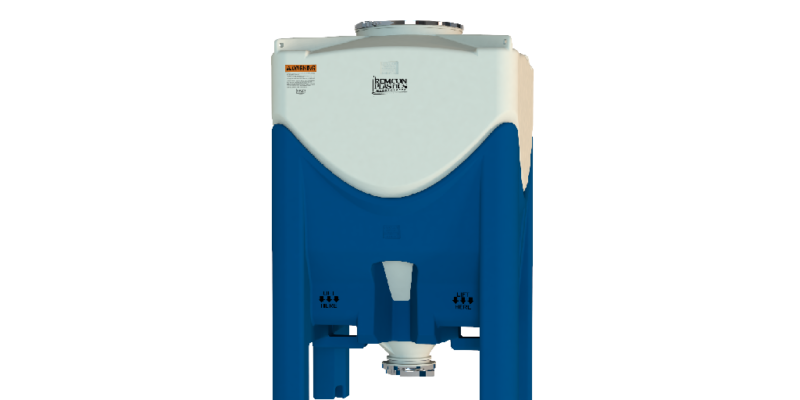Reading, PA — Remcon Plastics, Inc., today, announced the launch of its state of the art, eco-friendly, dry bulk mass flow reusable polyethylene hopper. This heavy duty unit has been designed specifically for use with fine particles and low bulk density powders. The initial offering is a two-piece design featuring a 60° cone and a 45 cubic foot capacity. Molded from FDA approved virgin polyethylene the DBH-60/45 is sanitary for food and pharmaceutical applications yet rugged enough for the most demanding industrial challenges. Design features allow the DBH-60/45 to accommodate a variety of valves and discharge configurations. Utilizing a patent pending interlock system the hopper and base can be lifted by crane as one piece or can be set up in a manner where a crane can easily lift the hopper out of the base for sanitary discharge or in areas with limited headroom.
According to Remcon President & CEO, Peter Connors, “Over the past 39 years, Remcon innovations have become the industry standards in many market segments because of the cost savings generated by durability, ease of use and sustainability. We are confident that the new DBH-60/45 will continue that trend.”
Connors noted, “The key to our long term success has been the creation of long lasting products that far outperform single/limited use flexible packaging. The long service life that each of our products provide means significantly reduced stress on your budget and our environment”
The Remcon heavy duty Dry Bulk Hopper has application for products such as dry resins, powders, or other loose granular solids. The hoppers can hold nominal weight of 5,000 pounds. This newly designed container compliments the full line of material handling products offered by Remcon, which are FDA compliant for storage, in-process handling, and shipping.
Georgeann Vaclavik, Remcon’s Director of Marketing, noted, “We will be showcasing our new heavy-duty, dry bulk material handling containers during the International Powder and Bulk Solids Conference and Exhibition in Rosemont, IL the week of August 23, 2021. The Powder Show brings together the powder and bulk solids handling and dry processing sector for one event, affording us the opportunity to showcase these heavy duty mass-flow hoppers to companies looking for innovative, environmentally friendly material handling solutions.”





